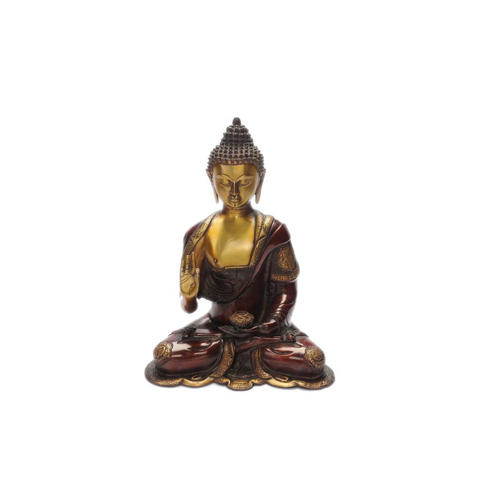
Buddhism, Types Of Buddhas, Dos & Donts When Choosing Where To Place
Buddhism, one of the world's major religions. It is believed that human life is a cycle of suffering & rebirth. The 4 main teachings which are the noble truths are firstly, suffering (Dukkha) teaches that everyone's life are going through some form of suffering. Second, the origin of suffering which comes from desire. Third, cessation of suffering (Nirodha), possible to stop suffering & achieve enlightenment. Fourth, path to the cessation of suffering (Magga), the middle way which are steps to achieve enlightenment.
Previously, we have explored the postures of buddha, now let's look into the different types of Buddhas and their different looks, poses & the different meanings.
- Protection Buddha Abhaya Mudra - a seated buddha with right hand raised & facing outwards. Signifies courage, a shield & overcoming fear. Other features include either sitting or standing of the buddha with left palm lying on the lap or carrying a bowl of Buddhist Monk.

- Teaching Buddha Dharmachakra Mudra - signifies understanding, wisdom. Both hands are held at chest level, with thumb & index finger forming a circle. Palm of right hand is turned in & palm of left hand turned out. The statue depicts the first sermon given after gaining enlightenment. Appropriate for those who believe in spirituality. Carries great inception of Buddhism & dharmachakra can be interpreted as 'turning the wheel of cosmic righteousness'.

- Meditation Buddha Dhyana Mudra - for those looking for peace & calm, plays a great role if one is looking to improve their mediation skills. Can be set up in rooms where people can sit & unwind. Usually seated in a position called double lotus where the ankles of each leg tucked behind one another in a locked position. The back of the right hand rested on palm of right hand, both hands rested flat on the lap. The two thumbs are joining together to form a small triangle which symbolises unity. Also shaped similar to a triangle that represents stability. The eyes are half closed or completely closed to represent full concentration.

- Earth Touching Buddha Bhumisparsha Mudra - Represents the story of Buddha that led him to verge of enlightenment. The Buddha is seen crossed leg with left hand sitting on lap, right hand is pointing towards the ground where palm is facing inwards. This posture known as 'calling the earth to witness', defines the moment of enlightenment for Buddha.

- Gift Giving Buddha Varada Mudra - Used to convey & grant blessings to such as knowledge, virtue & compassion. Represented by medicine buddha, grants gifts of medicine. Seated and right hand stretched over right knee, right hand falls downwards where palm is facing inwards & signifies granting blessings to mankind. Can also be seen in both sitting & standing positions, to get rid of negative energy & ward off evils. Essential for those seeking good health & prosperity.

- Debating Buddha Vikarka Mudra - symbol for intellectual discussions, the origin shows that Buddha is a great gifted public speaker. The tip of the thumb & index finger touches each other & form a circle. The palm of the right hand faces outwards, the circle represents a constant flow of energy. The back of the left hand lies flat in the lap whose palm faces upwards & carries an alms bowl.

- Laughing Buddha Buddhai - widely recognisable chinese deity that is joyful & loving which is based on a real-life chinese monk. It depicts Buddha in its later life, happy & carrying a big belly from an abundant life. Usually in a sitting or standing position, the hands over his head, supporting a Ruyi pot. It is believed that rubbing the fat belly can bring in luck & prosperity.

Dos & Donts when placing Buddhas?
- Areas where you placed the Buddhas should be kept clean & uncluttered.
- Never place Buddhas in unsanitary places like bathrooms & kitchens.
- Do not place Buddhas directly on the ground.
Where to place Buddhas for best benefits?
- Entrance of your homes, placed laughing & protection buddhas to bring in abundance, fortune & protection.
- Placed the teaching & meditation buddha in knowledge areas or bedrooms to cultivate & deepen knowledge.
